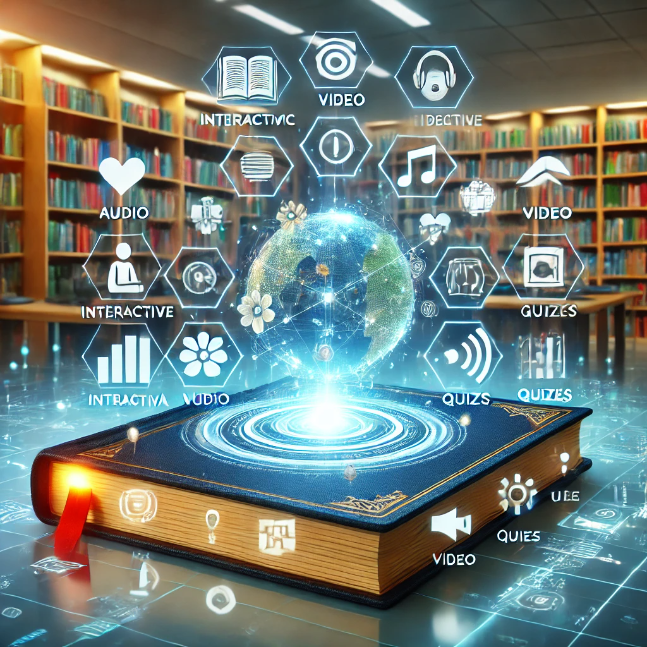The Rise of Smart Books: Revolutionizing the Reading Experience

In an age where technology permeates every aspect of our lives, it's no surprise that it has found its way into the realm of literature. Enter "smart books" – the latest innovation transforming the way we read, learn, and interact with written content. These technologically enhanced books are more than just digital versions of their paper counterparts; they offer an immersive, interactive, and personalized reading experience. In this article, we'll explore what smart books are, their benefits, and how they are set to revolutionize the literary world.
What Are Smart Books?
Smart books are a fusion of traditional print or digital books and modern technology, designed to provide a richer reading experience. They incorporate various multimedia elements, such as audio, video, interactive graphics, and hyperlinks, to create a more engaging and educational experience. Smart books can be accessed on multiple devices, including e-readers, tablets, smartphones, and computers, making them highly versatile and accessible.
Key Features of Smart Books
- Multimedia Integration: Smart books often include audio narration, videos, and interactive graphics that enhance the understanding of the content. For instance, a history smart book might feature video clips of historical events or interactive timelines.
- Interactivity: These books allow readers to interact with the content in various ways. This can include answering quiz questions, participating in polls, or exploring additional resources through hyperlinks.
- Personalization: Smart books can adapt to the reader's preferences and learning pace. For example, they might offer customized quizzes based on the reader's progress or suggest related topics of interest.
- Enhanced Annotations: Readers can make notes, highlight text, and even leave voice comments, which can be synced across devices.
- Real-Time Updates: Unlike traditional books, smart books can be updated in real-time. This is particularly useful for textbooks or reference materials that need to stay current.
Benefits of Smart Books
1. Improved Learning Experience
Smart books cater to different learning styles by incorporating various multimedia elements. Visual learners can benefit from videos and interactive graphics, while auditory learners might prefer audio narration. This multimodal approach helps reinforce understanding and retention of information.
2. Increased Engagement
The interactive nature of smart books keeps readers more engaged than traditional books. The ability to interact with the content, participate in quizzes, and explore additional resources makes reading a more dynamic and enjoyable activity.
3. Accessibility
Smart books are accessible to a broader audience, including those with disabilities. Features such as text-to-speech, adjustable font sizes, and high-contrast modes make them more inclusive.
4. Convenience
With smart books, readers can carry an entire library in their pocket. They can access their books anytime, anywhere, and on any device, making it easier to read on the go.
5. Environmental Impact
By reducing the need for physical books, smart books contribute to environmental sustainability. They help save trees and reduce the carbon footprint associated with printing and shipping physical books.
Applications of Smart Books
1. Education
Smart books are making significant inroads into the educational sector. They offer interactive textbooks that make learning more engaging and effective. Teachers can track students' progress in real-time and provide personalized feedback.
2. Professional Training
In the corporate world, smart books are used for training and development. They provide employees with interactive manuals and training materials that can be updated as needed.
3. Leisure Reading
Even in the realm of fiction and non-fiction, smart books offer an enhanced reading experience. Readers can delve deeper into the story with interactive maps, character bios, and multimedia elements.
Future of Smart Books
The future of smart books looks promising as technology continues to evolve. Advances in artificial intelligence and machine learning could lead to even more personalized and adaptive reading experiences. Virtual reality (VR) and augmented reality (AR) could further transform smart books, providing fully immersive reading environments.
For a deeper dive into how VR and AR are shaping the future of reading, check out our article on Virtual and Augmented Reality (VR/AR) Storytelling and Books: The Future of Reading.
As publishers and authors continue to explore the possibilities of smart books, we can expect to see a broader range of titles and genres adopting this technology. From educational materials to immersive fiction, smart books are poised to revolutionize the way we read and learn.
Conclusion
Smart books represent the next frontier in the evolution of reading. By combining traditional content with cutting-edge technology, they offer a richer, more engaging, and personalized experience. Whether you're a student, a professional, or a leisure reader, smart books have something to offer. As we embrace this new era of reading, one thing is clear: smart books are not just a passing trend but a significant leap forward in the world of literature. So, dive into the world of smart books and experience reading like never before.
For more insights into the evolution of storytelling, don't miss our comprehensive article on The Evolution of Storytelling: Virtual and Augmented Reality (VR/AR) in Books.



